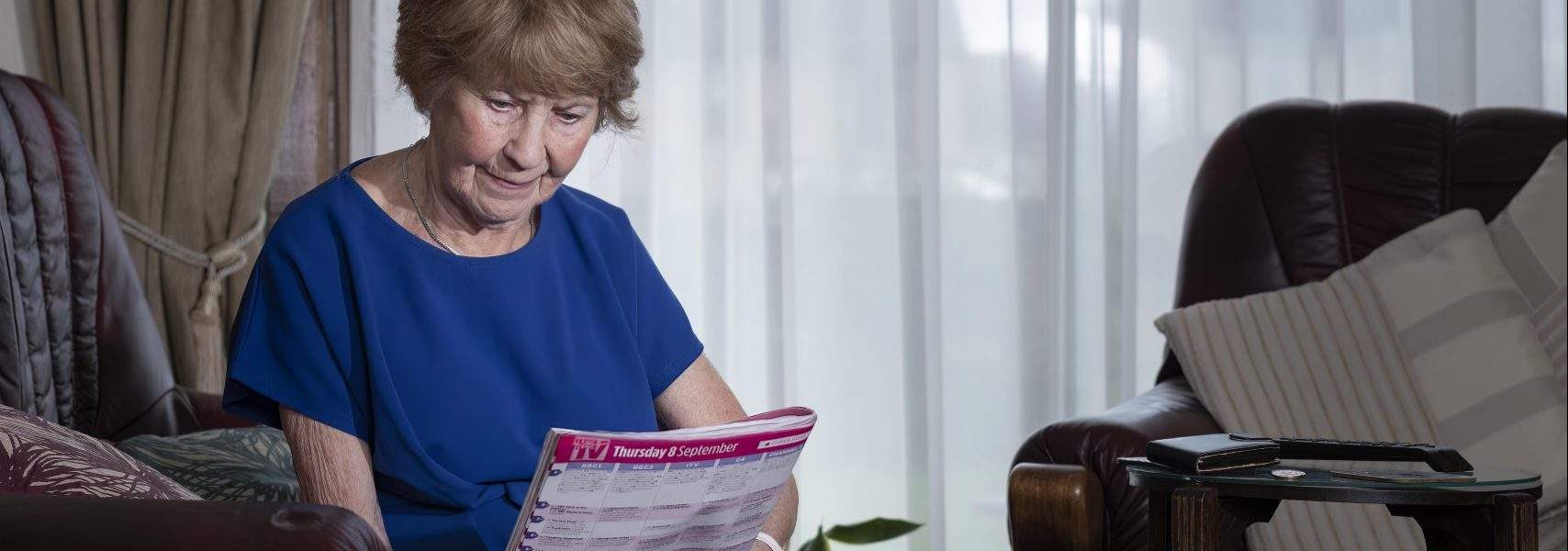Two years ago, history was made. On 8 December 2020, 90-year-old Margaret Keenan became the first person in the world to receive a COVID-19 jab outside of a clinical trial. At Coventry University Hospital, she received the Pfizer/BioNTech vaccine from May Parsons, NHS Matron. This game-changing event features in the Science Museum’s new free exhibition, Injecting Hope: The race for a COVID-19 vaccine. On display is not only the vial of the vaccine administered to Margaret, but also the iconic charity t-shirt she wore to receive it and the uniform May wore to give it.
‘Margaret Keenan’s vaccination was a very significant event as it marked a turning point in our relationship with a disease that had turned so many lives upside down,’ said Stewart. ‘It was a real moment of hope.’
Like many in 2020, artist Angela Palmer became fascinated by knowing the virus better. Working with bioinformatics specialists, she engraved cross-sections of the genomic model of the COVID-19 virus by hand, layer by layer, onto glass sheets, to create a three-dimensional representation. The result, 2020: the Sphere that Changed the World, is a key part of Injecting Hope: an evocation of the virus that causes COVID-19, 8 million times larger in scale, it renders the invisible visible.
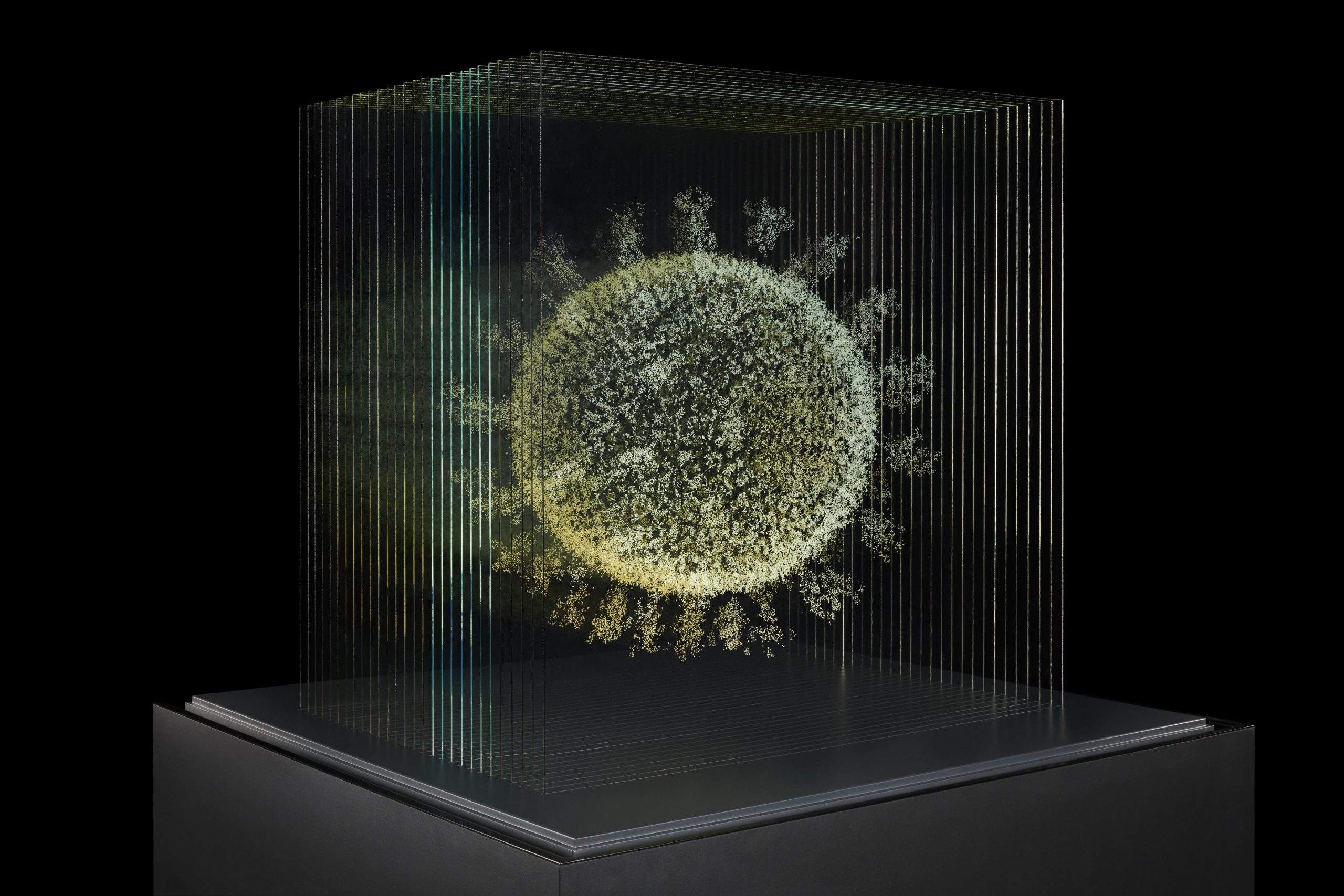
In early January 2020, when a scientist in China released the genetic code of the virus – translating it into an identifying string of RNA – analysis began immediately. In the exhibition the genetic code of the virus is on display in its entirety – the code relating to the protein spike, the focus of so many press conferences and media coverage is picked out in pink.
This string of RNA data could be plugged into existing technologies and through calling on ongoing research and and well-established techniques, scientists had the chance to develop a vaccine.
The fastest any vaccine had previously been developed, from viral sampling to approval, was within four years. The mumps vaccine, created in the 1960s, had held the record until 2020. Created in less than a year, the COVID-19 vaccines are the fastest ever created.

Margaret’s vaccination came only days after UK regulators had granted the vaccine approval. Injecting Hope outlines how this was possible: ‘The development of COVID-19 vaccines was fast, but corners were not cut,’ said Stewart. ‘Scientists were also not starting from scratch, but could call on years of established knowledge, expertise and ongoing research and re-direct it towards this new challenge. The pandemic focussed many minds; scientific developments were accompanied by extensive funding, planning and political will.’
The process of both innovating and adapting existing work enabled the fastest development of a vaccine in history.
Whether plugging genetic code into laptops to create vaccine solutions, or volunteering to take their place on blue clinical chairs to test whether they worked, people are at the heart of the vaccine development story.
The ‘Bad Elf’ T-shirt worn by Professor Tess Lambe as she designed a vaccine over a long weekend is on display alongside brightly coloured leggings with virus and bacteria motifs, part of the truly ‘viral’ outfit worn by Dr Elisa Granato as the first volunteer vaccinated in the Oxford’s COVID-19 vaccine’s clinical trial. These moments of lightness were a crucial relief in the desperate urgency that haunted the creation of COVID-19 vaccines.

For Natasha,’s finding the people, like Margaret and May, at the heart of the story of the COVID-19 vaccines is one of the highlights of Injecting Hope. ‘Injecting Hope tells the human story involved in the production and development of the vaccines. Not just the famous people who are now household names, but more ordinary people – the volunteers in the trials, those involved in the logistics of the vaccine rollout. The personal objects shine a light on the hidden extraordinarily ordinary stories of life-saving science.’
Scientists worked round the clock to create possible solutions; people stepped up, as they have throughout history, to test their safety for the population. Their work and the vaccines they helped develop offered hope for a way out of the pandemic.
Billions of vaccinations were to follow.
Huge vats of the vaccine were manufactured and both machinery and production line film footage feature in Injecting Hope.
The Pfizer/BioNTech vaccine vials are tiny and unassuming, but one made history when used for the first time worldwide as part of a mass COVID-19 vaccination programme. ‘Margaret Keenan’s vaccination was a must-have moment to include in Injecting Hope,’ said Stewart.
‘We want to highlight the people behind this historic event. So alongside the actual vaccine vial and syringe – kindly donated by the NHS – we feature new portrait photos of both Margaret and May Parsons, the matron nurse who gave the jab. The pair also donated items that they wore on the day – May’s nursing tunic and Margaret’s famous festive t-shirt.’
‘We remember the moment of Margaret receiving her vaccine as the beginning of something important – not only the beginning of an international vaccine rollout programme, but as the moment that we might be able to hope again,’ added Natasha.
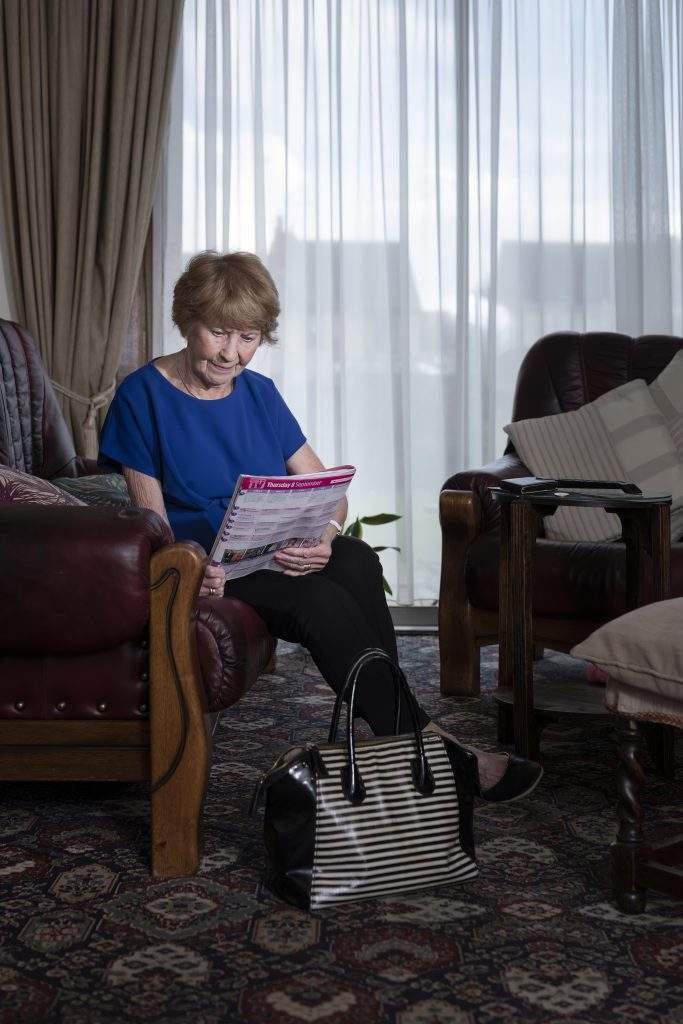
Vaccination is a numbers game – the more individuals that get one, the better the population is protected. In the UK, vaccinating millions against COVID-19 at speed required setting up huge networks of people and places.
In Injecting Hope, maps drawn up by the British Army and the notebooks of Dame Kate Bingham, Chair of the UK Vaccine Taskforce, filled with notes from meetings about the development and deployment of vaccines, shed light on how delivering jabs to a nation was approached.
Many of us travelled to hospitals, football stadiums and even museums to receive our doses. Material from the vaccination centre hosted at the Science Museum from March 2021, bring to life how 150 million doses of COVID-19 vaccine were injected into arms across the UK.
Margaret’s moment in the spotlight marked the beginning of the largest and fastest global vaccination campaign in history.
The Science Museum’s exhibition closes with Junko Mori’s small-scale piece, Hope in Balance. This silver and bronze sculpture once again makes the invisible visible, as it depicts the immune system’s response to a virus.
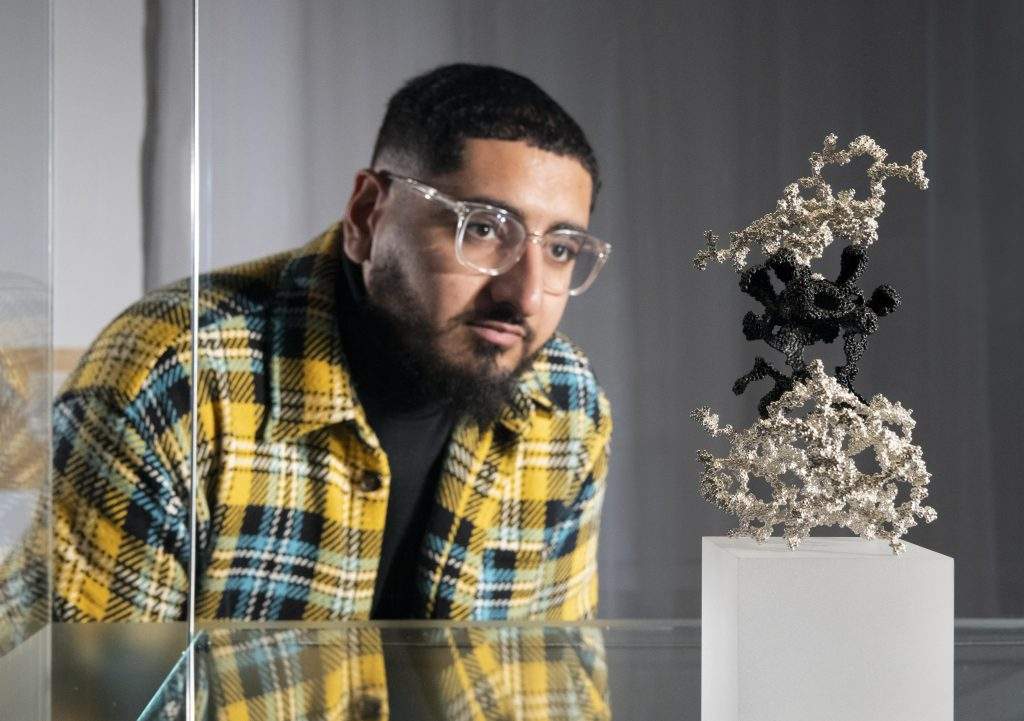
Injecting Hope considers a future with COVID-19 and explore how the response to the pandemic will be built upon for future preparedness. The tea mug that belonged to Professor Dame Sarah Gilbert, one of the creators of the Oxford-AstraZeneca vaccine, stands as a reminder of the intention for the next pandemic: ‘Keep Calm and Develop Vaccines.’
A significant portion of the objects on display in Injecting Hope, including the empty vial from Margaret’s historic immunisation have joined the Science Museum Group Collection through the COVID-19 Collecting project. Natasha commented: ‘Our COVID-19 Collecting Project began in February 2020 since when we have added over 1000 objects that capture the experience of the pandemic for future generations.’
Pandemic-related items have historically been rare in collections. She said, ‘These items rarely survive, either due to their ephemeral nature (such as rapidly changing advice given on posters), because they are destroyed (due to contact with pathogens or bodily fluids) or perhaps because the people living through these traumatic events were eager to forget.’
And that is why it is so important to highlight this small and unassuming vial.
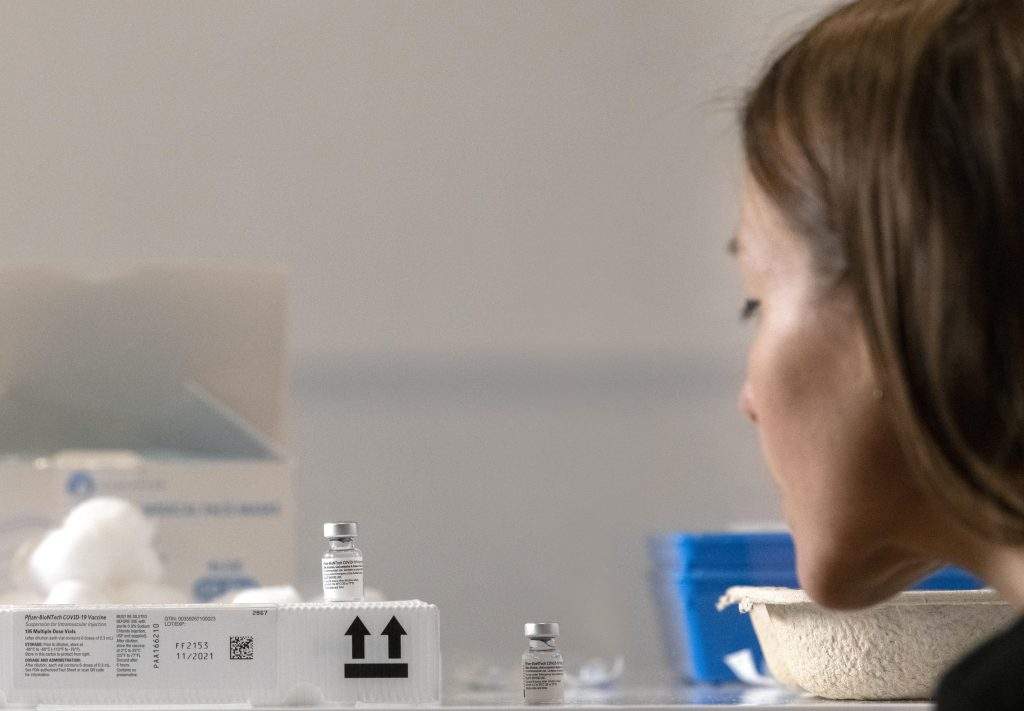
‘I think many of us feel that, in some ways, the historic moment of Margaret Keenan’s first vaccination doesn’t seem as though it was only two years ago. And in other ways, so much has changed!’ said Natasha.
The display commemorating Margaret’s vaccination by May is a single moment which represents the boundless creativity, ingenuity and sheer hard work of scientists, medical practitioners, technicians and volunteers across the world who researched, developed, tested and deployed a vaccine in record time.
Injecting Hope: The race for a COVID-19 vaccine is now open at the Science Museum until 7 January 2024. Find out more and visit this free exhibition today.
